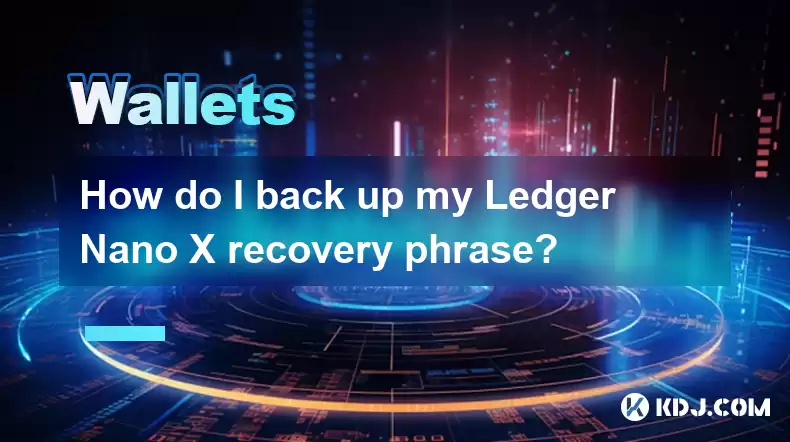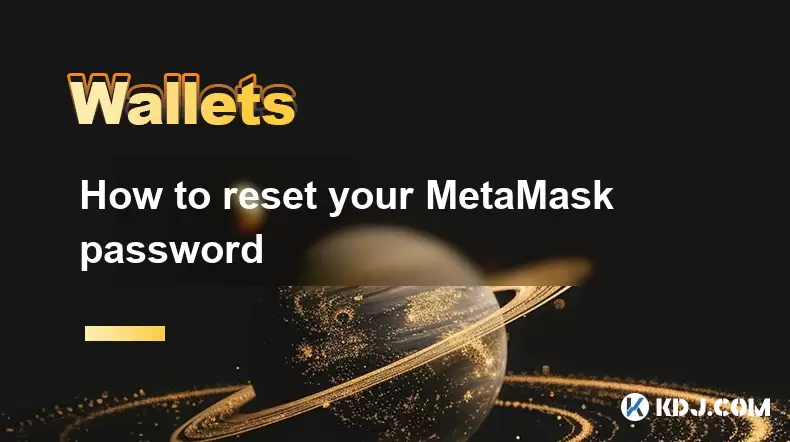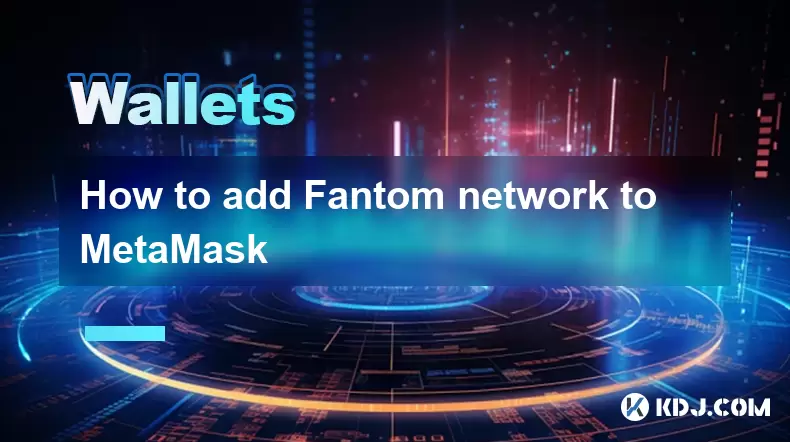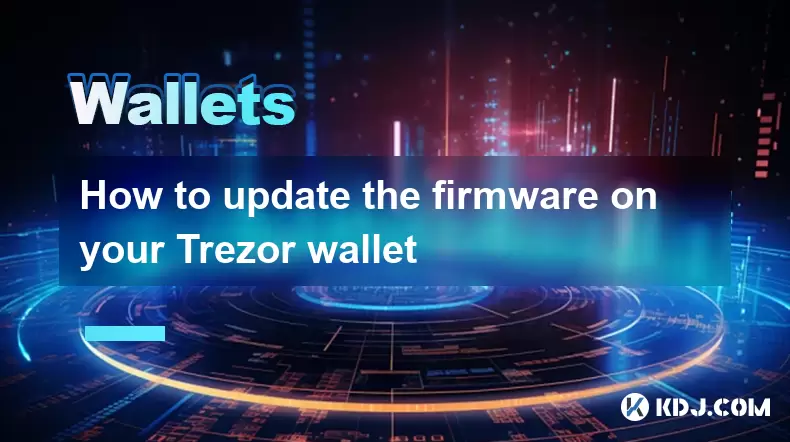-
 Bitcoin
Bitcoin $116800
0.06% -
 Ethereum
Ethereum $3916
2.20% -
 XRP
XRP $3.333
8.10% -
 Tether USDt
Tether USDt $1.000
0.02% -
 BNB
BNB $789.3
1.45% -
 Solana
Solana $177.6
2.58% -
 USDC
USDC $0.0000
0.02% -
 Dogecoin
Dogecoin $0.2232
4.03% -
 TRON
TRON $0.3384
0.01% -
 Cardano
Cardano $0.8005
4.26% -
 Stellar
Stellar $0.4651
11.58% -
 Hyperliquid
Hyperliquid $41.38
5.34% -
 Sui
Sui $3.828
2.87% -
 Chainlink
Chainlink $19.41
11.81% -
 Bitcoin Cash
Bitcoin Cash $581.4
0.02% -
 Hedera
Hedera $0.2623
3.12% -
 Avalanche
Avalanche $23.50
3.00% -
 Ethena USDe
Ethena USDe $1.001
-0.04% -
 Litecoin
Litecoin $121.8
0.85% -
 UNUS SED LEO
UNUS SED LEO $8.986
0.38% -
 Toncoin
Toncoin $3.359
1.47% -
 Shiba Inu
Shiba Inu $0.00001293
2.14% -
 Uniswap
Uniswap $10.61
4.95% -
 Polkadot
Polkadot $3.917
3.45% -
 Dai
Dai $1.000
-0.01% -
 Bitget Token
Bitget Token $4.461
1.26% -
 Cronos
Cronos $0.1516
2.47% -
 Monero
Monero $265.7
-5.07% -
 Pepe
Pepe $0.00001118
2.72% -
 Aave
Aave $283.4
3.76%
How do I back up my Ledger Nano X recovery phrase?
Your Ledger Nano X recovery phrase is crucial for accessing your crypto, but backing it up introduces significant security risks; consider the trade-offs carefully.
Mar 29, 2025 at 10:35 pm

Understanding the Critical Importance of Your Recovery Phrase
Your Ledger Nano X recovery phrase, also known as your seed phrase, is the single most important piece of information related to your cryptocurrency assets stored on the device. It's a 24-word sequence, randomly generated, and essential for accessing your funds should your Ledger Nano X be lost, stolen, or malfunction. Never share this phrase with anyone, under any circumstances. Compromising it means losing access to all your cryptocurrencies.
Why Backing Up Your Recovery Phrase is Risky
While it's crucial to have a backup, backing up your recovery phrase introduces a significant security risk. A physical backup, like writing it down, is vulnerable to theft, fire, or accidental destruction. Digital backups, even encrypted ones, are susceptible to hacking. Therefore, the decision to back up your recovery phrase requires careful consideration of the risks involved and the implementation of robust security measures. The inherent risk should never be underestimated.
Methods for Securing Your Recovery Phrase (with inherent risks)
There are several ways to back up your recovery phrase, but each carries inherent risks:
Writing it down: This is the most common method, but it's vulnerable to physical loss or theft. Consider using a durable, tamper-evident notebook and storing it in a secure, fireproof location. Remember, this is the most vulnerable option.
Using a metal plate: These plates etch the recovery phrase onto metal, offering some increased durability against damage compared to paper. However, they can still be lost or stolen. Consider this a slightly improved version of writing it down.
Splitting it up: Dividing the 24 words across multiple locations can mitigate the risk of total loss. However, this requires meticulous organization and increases the complexity of recovery. This method adds complexity and requires careful planning.
Using a password manager (with extreme caution): Some advanced users might consider using a password manager with strong encryption and multi-factor authentication. However, this approach is inherently risky and should only be considered by users with advanced technical knowledge and a deep understanding of security best practices. This is only recommended for advanced users with a strong understanding of security.
Strategies for Minimizing Risks Associated with Backup
Regardless of the chosen method, several strategies can minimize the risks:
Use a secure location: Store your backup in a physically secure location, protected from fire, water, and theft. Consider a safety deposit box or a secure home safe.
Employ strong physical security: If you write it down, use a tamper-evident notebook or a metal plate. Consider using a strong, secure container.
Regularly review your backup: Periodically check the condition of your backup to ensure it remains legible and undamaged.
Avoid digital backups: Digital backups are significantly more vulnerable to hacking and data breaches. Avoid storing your recovery phrase digitally whenever possible.
Consider the trade-offs: Weigh the benefits of having a backup against the risks of losing control of your recovery phrase. The risk of losing access to your funds is significant.
Alternatives to Backing Up Your Recovery Phrase
The most secure option is to avoid backing up your recovery phrase altogether. This significantly reduces the risk of your crypto assets being compromised. However, it also means that if you lose your Ledger Nano X, you lose access to your funds. This necessitates a careful assessment of your risk tolerance and the value of your cryptocurrency holdings.
Understanding the Implications of Losing Your Ledger Nano X
Losing your Ledger Nano X without a backup means irreversible loss of access to your cryptocurrency. There is no recovery process without your recovery phrase. This highlights the critical importance of securing your device and carefully considering the implications of not having a backup. The responsibility for securing your assets rests solely with you.
Importance of Device Security
Beyond backing up your recovery phrase, focus on securing your Ledger Nano X itself. This includes:
Strong Passphrase: Use a strong and unique passphrase to further protect your device.
Firmware Updates: Regularly update your Ledger Nano X's firmware to benefit from the latest security patches.
Beware of Phishing: Be vigilant against phishing scams that attempt to trick you into revealing your recovery phrase or device information.
Only use official Ledger channels: Download firmware updates and software only from the official Ledger website.
Frequently Asked Questions
Q: Is it absolutely necessary to back up my Ledger Nano X recovery phrase?
A: No, it's not absolutely necessary, but it significantly increases the risk of permanent loss of your cryptocurrency if your device is lost or damaged. The decision rests on your risk tolerance and the value of your assets.
Q: What is the safest way to back up my recovery phrase?
A: There is no single "safest" way. Each method carries inherent risks. The safest approach might be to avoid backing up your recovery phrase altogether, accepting the risk of irreversible loss if your device is compromised.
Q: What should I do if I lose my Ledger Nano X and don't have a backup?
A: Unfortunately, if you lose your Ledger Nano X and don't have a backup of your recovery phrase, your cryptocurrency is likely lost. There's no recovery mechanism without the phrase.
Q: Can Ledger help me recover my cryptocurrency if I lose my device?
A: Ledger cannot access your recovery phrase or assist in recovering your cryptocurrency if you lose your device and don't have a backup. They prioritize user security and will not have access to your private keys.
Q: What are the potential consequences of sharing my recovery phrase?
A: Sharing your recovery phrase gives anyone access to your entire cryptocurrency holdings. This could result in complete loss of your funds. Never share it with anyone, under any circumstances.
Disclaimer:info@kdj.com
The information provided is not trading advice. kdj.com does not assume any responsibility for any investments made based on the information provided in this article. Cryptocurrencies are highly volatile and it is highly recommended that you invest with caution after thorough research!
If you believe that the content used on this website infringes your copyright, please contact us immediately (info@kdj.com) and we will delete it promptly.
- BlockchainFX: The Crypto Presale Investors Can't Ignore
- 2025-08-08 19:10:12
- Pump.fun, Memecoins, Glass Full: Solana's Launchpad Wars Heat Up!
- 2025-08-08 18:50:12
- Crypto Market Heats Up: Altcoin Spree Drives Market Cap to $3.87T
- 2025-08-08 19:05:02
- Cardano (ADA) Price Gears Up: Open Interest Surges Amidst Key Resistance Retest
- 2025-08-08 19:15:42
- Bitcoin, Meme ICOs, and FOMO: Catching the Next Crypto Wave
- 2025-08-08 18:30:34
- OM, Investment, and Growth: Decoding the Latest Trends in Digital Assets
- 2025-08-08 18:30:34
Related knowledge

How to reset your MetaMask password
Aug 08,2025 at 01:28pm
Understanding the MetaMask Password Reset ProcessMany users confuse the MetaMask password with the seed phrase or private key, but they serve differen...

How to buy Dogecoin on MetaMask
Aug 08,2025 at 03:42am
Understanding Dogecoin and MetaMask CompatibilityDogecoin (DOGE) is a popular meme-based cryptocurrency that operates on its own blockchain, originall...

How to create a new crypto wallet
Aug 07,2025 at 09:22pm
Understanding the Basics of a Cryptocurrency WalletA cryptocurrency wallet is a digital tool that allows users to store, send, and receive digital ass...

How to add Fantom network to MetaMask
Aug 07,2025 at 08:21am
Understanding the Fantom Network and MetaMask IntegrationThe Fantom network is a high-performance, scalable, and secure blockchain platform designed f...

How to update the firmware on your Trezor wallet
Aug 07,2025 at 05:00pm
Understanding the Role of Staking in Cryptocurrency EcosystemsStaking has become a fundamental component of many blockchain networks that operate unde...

How to export your transaction history from Coinbase Wallet
Aug 07,2025 at 06:50am
Understanding Coinbase Wallet and Transaction HistoryCoinbase Wallet is a self-custodial cryptocurrency wallet that allows users to store, manage, and...

How to reset your MetaMask password
Aug 08,2025 at 01:28pm
Understanding the MetaMask Password Reset ProcessMany users confuse the MetaMask password with the seed phrase or private key, but they serve differen...

How to buy Dogecoin on MetaMask
Aug 08,2025 at 03:42am
Understanding Dogecoin and MetaMask CompatibilityDogecoin (DOGE) is a popular meme-based cryptocurrency that operates on its own blockchain, originall...

How to create a new crypto wallet
Aug 07,2025 at 09:22pm
Understanding the Basics of a Cryptocurrency WalletA cryptocurrency wallet is a digital tool that allows users to store, send, and receive digital ass...

How to add Fantom network to MetaMask
Aug 07,2025 at 08:21am
Understanding the Fantom Network and MetaMask IntegrationThe Fantom network is a high-performance, scalable, and secure blockchain platform designed f...

How to update the firmware on your Trezor wallet
Aug 07,2025 at 05:00pm
Understanding the Role of Staking in Cryptocurrency EcosystemsStaking has become a fundamental component of many blockchain networks that operate unde...

How to export your transaction history from Coinbase Wallet
Aug 07,2025 at 06:50am
Understanding Coinbase Wallet and Transaction HistoryCoinbase Wallet is a self-custodial cryptocurrency wallet that allows users to store, manage, and...
See all articles

























































































